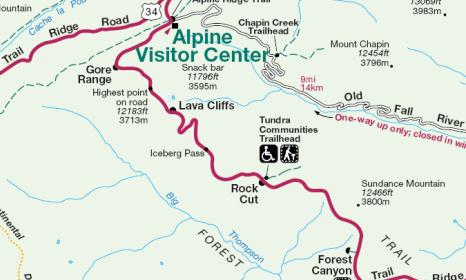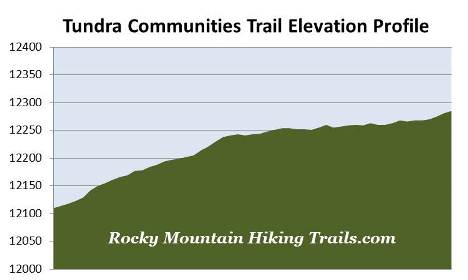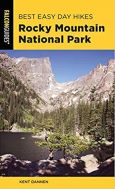
Tundra Communities Trail
| Trail Features: | Outstanding Views, Alpine Tundra | 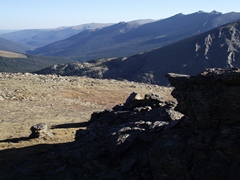 |
|||
| Trail Location: | Rock Cut | ||||
| Roundtrip Length: | 1.1 Miles | ||||
| Trailhead Elevation: | 12,110 Feet | ||||
| Total Elevation Gain: | 175 Feet | ||||
| Avg. Elev Gain / Mile: | 318 Feet | ||||
| Highest Elevation: | 12,285 Feet | ||||
| Trail Difficulty Rating: | 1.45 (easy) | ||||
| Parking Lot Latitude | 40.41216 | ||||
| Parking Lot Longitude | -105.7329 | ||||
Trail Description:
As far as I'm concerned Rocky Mountain National Park really needs to pick a name for this trail and go with it! Many years ago this trail was known as the Tundra Trail, and then became known as the Toll Memorial Trail at some point. I’ve also seen it referred to as the Tundra Nature Trail, but is now currently being called the Tundra Communities Trail.
In either case, the Tundra Communities Trailhead is located at Rock Cut near the top of Trail Ridge Road. The large parking area is 12.9 miles west of Deer Ridge Junction (Highways 34 and 36), and 4.1 miles east of the Alpine Visitor Center.
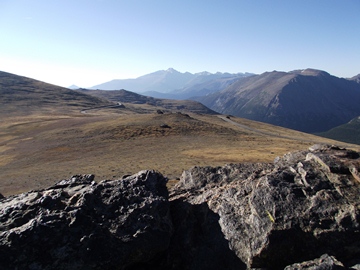 Even if you're already acclimated you're still going to feel the effects of altitude at this lofty elevation. With roughly 35% less oxygen than at sea level, your breath will immediately be taken away as you begin climbing the fairly steep grade from the parking area. Fortunately the park service has done a great job of placing interpretative signs along the paved trail, thus providing visitors with the excuse to stop periodically and read the information, and in the process, give them a chance to catch their breath.
Even if you're already acclimated you're still going to feel the effects of altitude at this lofty elevation. With roughly 35% less oxygen than at sea level, your breath will immediately be taken away as you begin climbing the fairly steep grade from the parking area. Fortunately the park service has done a great job of placing interpretative signs along the paved trail, thus providing visitors with the excuse to stop periodically and read the information, and in the process, give them a chance to catch their breath.
According to Rocky Mountain National Park: A History, the Arapaho and Ute Indians likely traveled across the future national park by using several east-west routes, such as Forest Canyon, Flattop Mountain, Fall River and this route, now known as Trail Ridge.
As you might expect from the name, the trail travels across the open tundra. Alpine tundra begins where trees cannot survive the extremes of cold, wind and a short growing season. In Rocky Mountain National Park this zone roughly begins at elevations between 11,000 and 11,500 feet.
 With roughly 40 frost-free days per year, summer on the tundra is very brief. Summer days seldom reach 70 degrees, and snow can fall on any day of the year. Temperatures usually stay below freezing for more than five months out of the year. The area along the Continental Divide receives roughly 40 inches of precipitation each year, 65% of which falls as snow. During the summer months brief afternoon thunderstorms, with lightning, hail and high winds, are very common.
With roughly 40 frost-free days per year, summer on the tundra is very brief. Summer days seldom reach 70 degrees, and snow can fall on any day of the year. Temperatures usually stay below freezing for more than five months out of the year. The area along the Continental Divide receives roughly 40 inches of precipitation each year, 65% of which falls as snow. During the summer months brief afternoon thunderstorms, with lightning, hail and high winds, are very common.
Much of the alpine tundra in Rocky Mountain National Park is covered with dense turfs of sedges and grasses that support various animals. The rich soils of the tundra also support a variety of wildflowers, including the alpine sunflower, which only grows in the Rocky Mountains. This plant stores solar energy for seven to ten summers before blooming only once, then the whole plant dies.
Only a few animals, such as pikas, ptarmigans and marmots, live year-round at these elevations. Others, such as ravens, hawks, coyotes and elk, migrate onto the tundra during the summer months.
After only a quarter-of-a-mile the trail begins to level out, and becomes less taxing on the lungs.
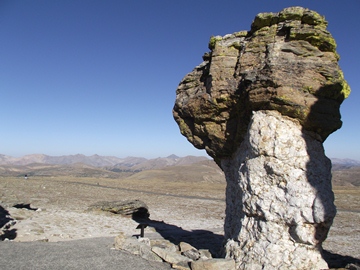
Roughly four-tenths of a mile from the trailhead you'll reach a side trail that leads to Mushroom Rocks. In addition to some pretty interesting rock formations, the area on the other side of the rocks provides an awesome view of Longs Peak and Forest Canyon.
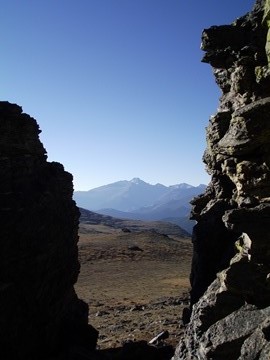
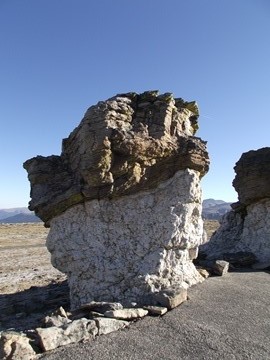
"Mountaineering, in its broader sense, promotes the health and strength of the body, it teaches self-reliance, determination, presence of mind, necessity for individual thought and action, pride of accomplishment, fearlessness, endurance, helpful cooperation, loyalty, patriotism, the love of an unselfish freedom, and many other qualities that make for a sturdy manhood and womanhood."
- Roger Toll
At just over a half-mile, and an elevation of 12,319 feet, hikers will reach the end of the trail at the Toll Memorial. Look closely and you'll notice a plaque up in the rocks dedicated to Roger Toll, the former superintendent of Rocky Mountain National Park from 1921 to 1929. Prior to becoming park superintendent Toll was an avid mountaineer, became a charter member of the Colorado Mountain Club when it organized in 1912, and compiled a guidebook that was eventually published as Mountaineering in the Rocky Mountain National Park. During his tenure at the park he wrote numerous articles that helped to inform and educate the public, which ultimately helped to promote the park. He once observed that "It has been said that great views create great thoughts, and great thoughts create great men." My book, Ramble On (a history of hiking), contains an extensive section on the development of trails, clubs and hiking culture in America's first tourist destinations, national forests and national parks.

At the top of the rocks you'll also find a large geological marker that provides mileage and elevation data for the surrounding mountains, as well as for other parks around the country. From this vantage point you’ll have outstanding panoramic views of Longs Peak, Fall River Pass Road, the Alpine Visitor Center, and the four major mountains of the Mummy range, including Mummy Mountain, Chiquita, Ypsilon and Chapin.
